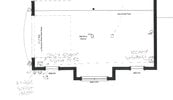Hey All!
So my current home setup is a sub panel in my garage. And a wall charger hardwired to it.
New home build. Builder installed the sub panel in garage. Around the corner installed a 240v 50A access plus a NEMA 14-50 outlet.
Question is, does the NEMA give me any advantage? Should I not have to hard wire the wall charger at new house and just use the NeMA? Am I getting same performance? From what I read it drops to 32A. Is that right? Thanks!
So my current home setup is a sub panel in my garage. And a wall charger hardwired to it.
New home build. Builder installed the sub panel in garage. Around the corner installed a 240v 50A access plus a NEMA 14-50 outlet.
Question is, does the NEMA give me any advantage? Should I not have to hard wire the wall charger at new house and just use the NeMA? Am I getting same performance? From what I read it drops to 32A. Is that right? Thanks!



